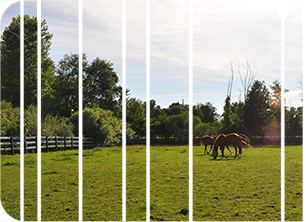
~ A tracker dog Pixel Shop ~
Slots are OPEN / Closed
* Created by "popular" Demand
* You MUST have a tracker dog to order
Tracker dogs (c) Nex & LaChromaticDragonFly
The thread can be found here : Click<3
Basic Species Description wrote: --- Intro
What are these, you ask? Tracker Dogs can be seen as dogs that went through an upgrade, not only do they have their senses sharpened, they are also easy to train and are loyal to their owner. Yes, I know that they have no eyes, they don't require those, they have a different way of seeing things. Through sounds and smells, they are able to form an image in their mind made out of grey tints and flashes of colour to spot their target. Although, they all have their unique way of seeing things. More info on each type is explained among the species differences.
They aren't mutated dogs, in fact, they are created artificially, but in such a way that they remain completely organic. So, they do not/can not breed and have no need for breeding. Their long tongue hangs outside of their mouth, a small genetic mistake that was never fixed due to it being so loved. Sometimes, this tongue will hold an alternate purpose such as it being poisonous.
They often go through months (years for some) of training back at the facility where I create these darlings. The new Trackers are kept in line by the older Trackers. There's often no need for violent treatment, and through discipline, these dogs are taught the ways of being a useful Tracker Dog. When they're ready, they're put in kennels to be displayed to the public.
But enough of those details, you're wondering about their exact purpose, yes? Trackers were initially made for the authorities to make their job of tracking down a criminal easier, but the dogs' use exceeds tracking alone. They have proven themselves useful in rescue operations, surveillance and even in scouting missions. They have even spread to normal families and small organizations. Needless to say, they're quite multi-functional. Care to adopt one yourself?
--- Species Difference
The first line of Trackers were quite similar, so I decided to create different groups, each with their own advantages and weaknesses. Some will be released more frequently than others. This list groups the most commons to the uncommons and shows the differences in sizes.
Image
1. Normal Tracker
Your average Tracker, can be used in any situation a dog can be used as well. They use their hearing and their sense of smell to form an image of their surroundings in their mind. They see healthy organic substances as green (yellow if hurt or dying organic species), and inanimate objects as faded greys. They're about as big as a German Shepherd.
2. "Wild" Tracker
A more furry version of the Tracker, their fuzzy fur keeps them warm in colder areas. They are larger than the normals and much stronger. They use the same technique of seeing as the normal does.
3. Stealth Tracker
Tracking isn't always included in its use, but this dog is great at sneaking into a building easily and watch what goes on. The Stealths see multiple images at once (due to the total of 6 cybernetic eye implants or optics) which they merge in their mind to have a very wide field of vision. Their hearing aids them to create a sort of night vision, "seeing" the vibrations caused by sounds. This is the smallest of the Trackers, but also the fastest.
4. Aquatic Tracker
Its name suggests its purpose. This Tracker is used to search for missing items or even people under the water. Greatly popular with divers. The Aquatics sense the vibrations in the water, but can also partially see due to the pupil-less eyes. They still rely mostly on their hearing and smell. Their increased nasal sensors pick up more smells underwater.
5. Aerial
A Tracker that patrols the skies. Popular with the police in big cities, this dog is able to fly over busy streets and keep the city safe. The Aerials see via infrared (thermal vision, if you prefer this term), this is easier than normal vision as they're often in the air or working at night. Their size can range from the size of a German Shepherd to the size of a Great Dane.



















